- Climate Differences
- Temperature
- Precipitation
- Weather Conditions
- Impact on Activities
- Conclusion
- Seasonal Activities
- Spring Activities
- Winter Activities
- Natural Landscapes
- Spring
- Winter
- Wildlife and Bird Species
- Spring
- Winter
- Plant and Flower Species
- Spring
- Winter
- Outdoor Sports and Recreation
- 1. Winter Sports
- 2. Spring Sports
- Conclusion
- Clothing and Accessories
- Holidays and Traditions
- Spring Holidays
- Winter Holidays
- “Question-Answer”
- What are some differences between spring and winter?
- How does the temperature differ between spring and winter?
- What are some common weather conditions in spring?
- How do the plants and flowers differ between spring and winter?
- What activities can be enjoyed in spring?
- How does the mood differ in spring compared to winter?
- “Video” Winter work to get your garden firing in spring | DIY Garden projects | Gardening Australia
Spring and winter are two distinct seasons that bring about noticeable changes in the environment and our daily lives. From the temperature and weather patterns to the activities we engage in, there are several key differences between these two seasons. Understanding these differences can help us appreciate the unique beauty and characteristics of each season.
One of the most striking differences between spring and winter is the temperature. Winter is characterized by cold temperatures, often reaching freezing levels or below. This chilly weather is accompanied by snowfall, frost, and icy conditions. On the other hand, spring is a transitional period where temperatures gradually rise, bringing relief from the cold. Spring is associated with pleasant, mild weather, making it a favorite season for many.
Another notable distinction between these seasons is the plant life and natural surroundings. Winter tends to be a barren season, with trees losing their leaves and many plants going dormant. The landscape is transformed into a magnificent winter wonderland of snow-covered fields and trees. In contrast, spring brings forth new life and growth. Flowers bloom, trees regain their foliage, and the vibrant colors of spring create a picturesque setting that symbolizes renewal and rejuvenation.
The activities and events that occur during these seasons also differ greatly. Winter is a time for holidays such as Christmas and New Year’s, where families come together and celebrate amidst the cozy ambiance. Activities like ice skating, skiing, and building snowmen are popular during this season. In contrast, spring is a time of new beginnings, and outdoor activities such as gardening, picnics, and hiking become more prevalent. The longer days and warmer weather encourage people to spend more time outside, enjoying the beauty of nature.
In conclusion, while both spring and winter have their unique charm, they are distinctly different seasons. From the temperature and weather patterns to the plant life and activities, each season offers its own set of experiences and sensations. Taking the time to appreciate these differences allows us to fully embrace the joys and marvels that spring and winter bring into our lives.
Climate Differences
The climate during spring and winter varies significantly in terms of temperature, precipitation, and overall weather conditions. These differences greatly impact the activities and experiences people can have during each season.
Temperature
One of the most noticeable differences between spring and winter is the temperature. In winter, temperatures tend to be much colder, often dropping below freezing. On the other hand, spring brings warmer temperatures as it is a transition period between winter and summer. The temperature during spring can vary depending on the location, but it generally ranges from mild to moderately warm.
Precipitation
Precipitation is another significant climate difference between spring and winter. Winter is typically associated with higher amounts of precipitation, including snowfall and rain. Spring, on the other hand, experiences less precipitation overall but often sees an increase in rainfall as the season progresses. This increase in rain is essential for the growth of plants and flowers during the springtime.
Weather Conditions
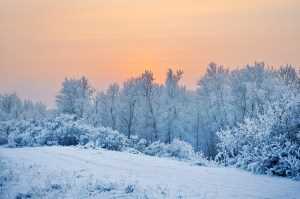
The weather conditions during winter and spring vary greatly. Winter is characterized by cold temperatures, snowfall, and icy conditions. These weather conditions can sometimes lead to disruptions in transportation, such as road closures or flight cancellations. Spring, on the other hand, experiences milder weather with occasional rain showers. It is a season of renewal and growth, with blossoming flowers and lush greenery.
Impact on Activities
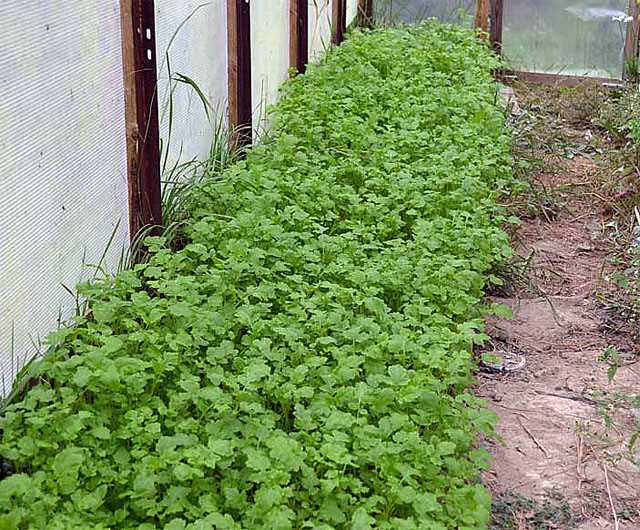
The climate differences between spring and winter have a significant impact on the activities people can engage in during each season. In winter, activities such as skiing, snowboarding, and ice skating are popular due to the snowy conditions. Spring, on the other hand, allows for outdoor activities such as hiking, biking, and gardening. The warmer temperatures and longer daylight hours make it more enjoyable to spend time outdoors.
Conclusion
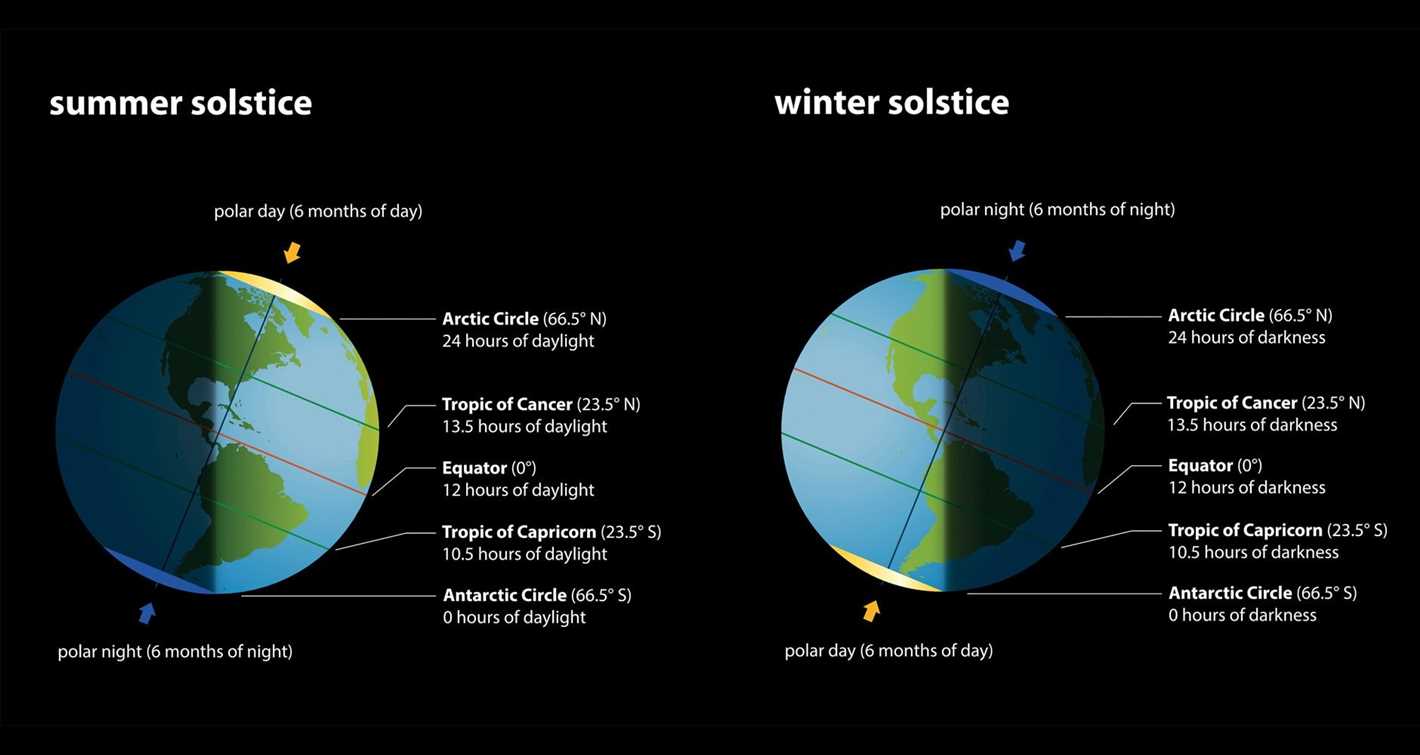
In summary, the climate differences between spring and winter are evident in terms of temperature, precipitation, and weather conditions. While winter is characterized by cold temperatures and snowfall, spring brings warmer temperatures and an increase in rainfall. These differences influence the activities people can enjoy during each season, with winter offering winter sports and spring providing opportunities to engage in outdoor activities and enjoy nature’s renewal.
Seasonal Activities
Spring Activities
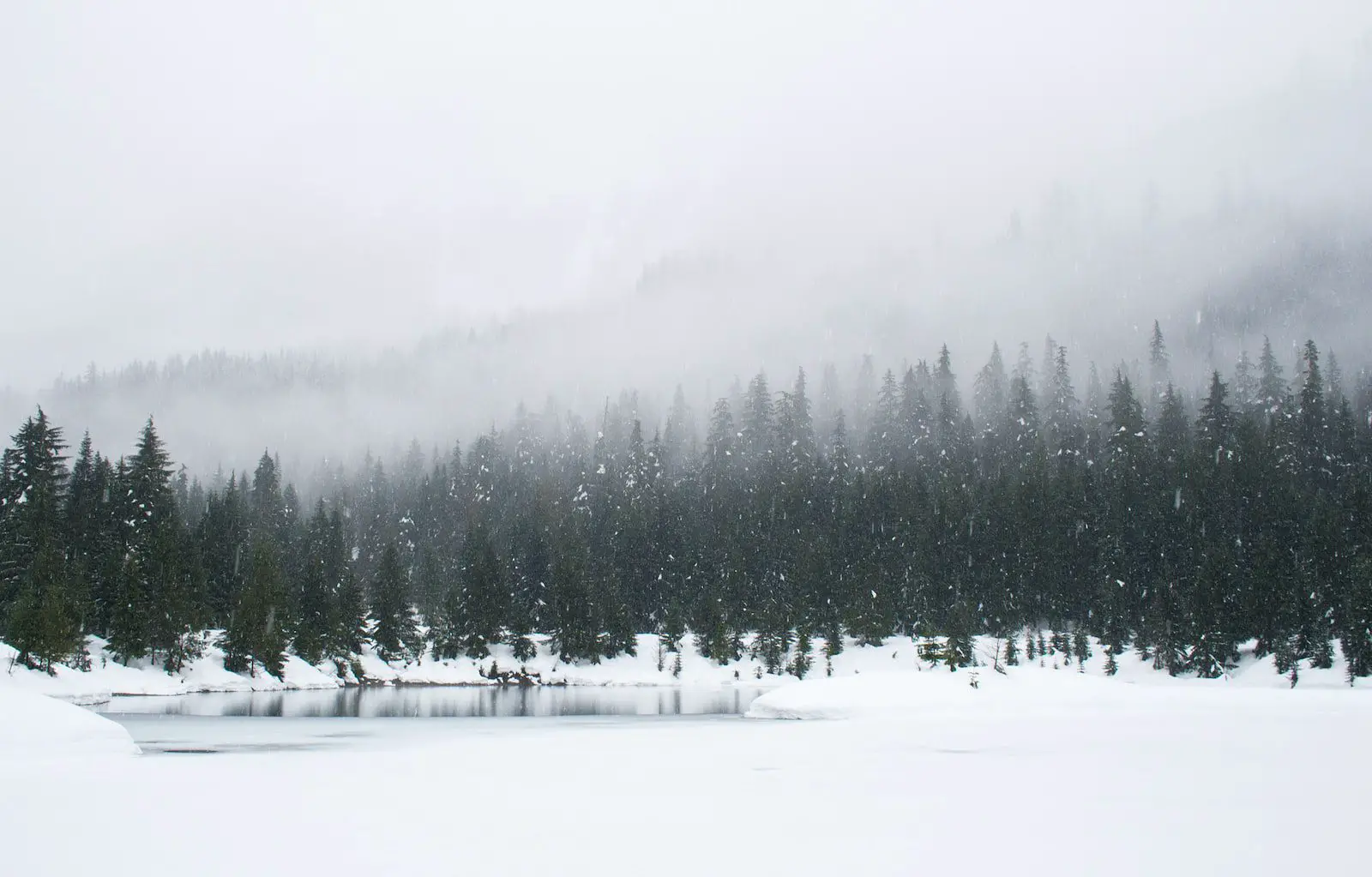
- Planting flowers and vegetables in the garden
- Going for picnics in the park
- Taking nature walks to enjoy the blossoming trees and flowers
- Participating in outdoor sports and activities like baseball, soccer, and hiking
- Visiting farmers’ markets to buy fresh produce
- Attending outdoor festivals and events
- Enjoying the longer daylight hours with outdoor activities
Winter Activities
- Building snowmen and having snowball fights
- Going ice skating or sledding
- Drinking hot chocolate by the fireplace
- Going skiing or snowboarding
- Celebrating holidays and spending time with family and friends
- Decorating the house with lights and ornaments
- Watching winter sports events like ice hockey
In both spring and winter, there are unique activities to enjoy. While spring offers opportunities to embrace the awakening of nature and spending more time outdoors, winter brings the joy of winter sports and cozy indoor activities.
Natural Landscapes
Spring
During spring, natural landscapes come to life after the cold winter months. The snow melts, and the ground becomes covered in lush green grass and colorful flowers. The trees start to bloom, painting the landscape with vibrant shades of pink, white, and purple.
As temperatures rise, the rivers and lakes begin to thaw, and the water flows freely again. This creates a picturesque scenery, with sparkling water reflecting the bright blue skies above. Birds return from their migration, filling the air with their joyful songs.
Winter
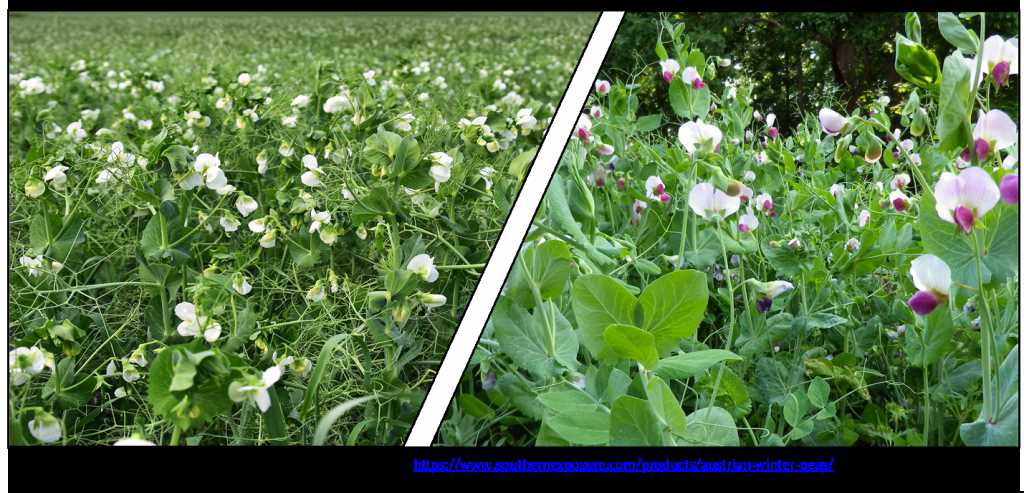
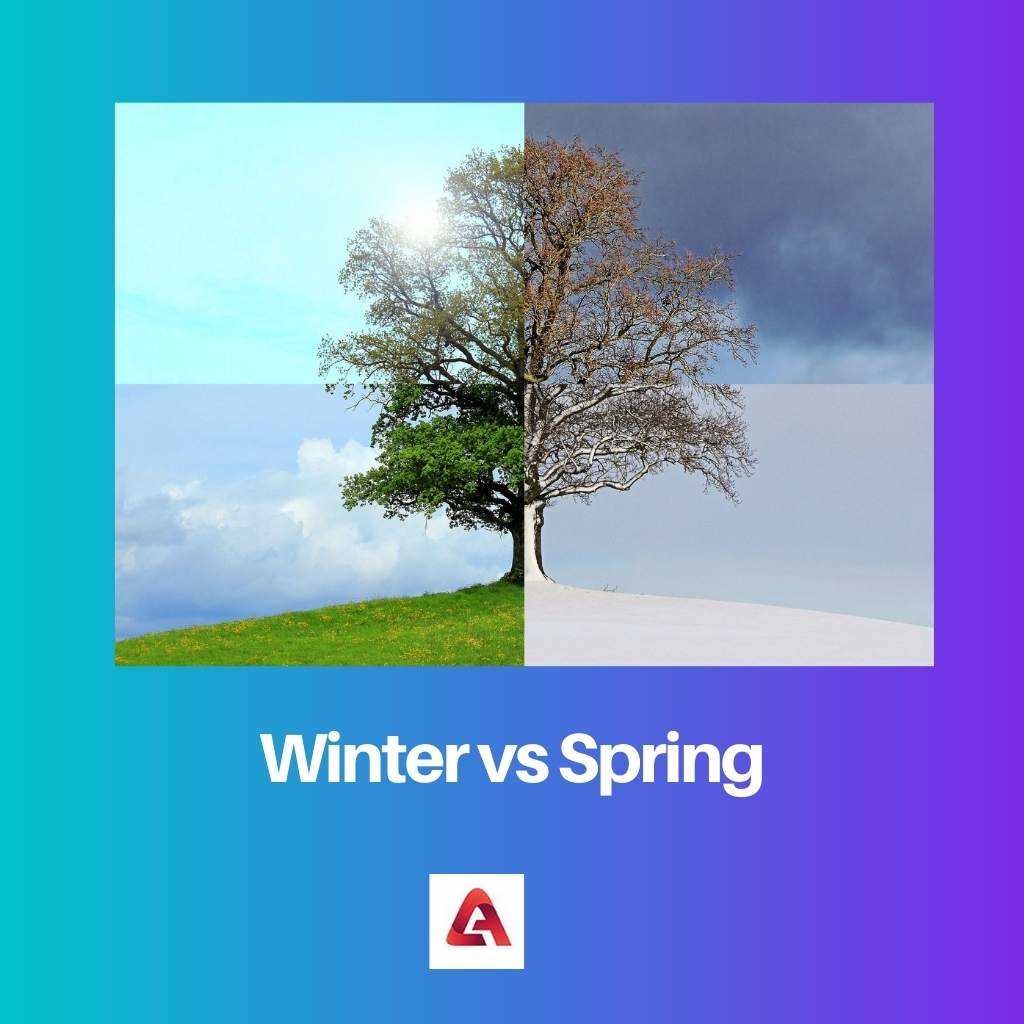
Winter landscapes have a distinct charm with their snowy, white blanket covering the ground. The trees are bare, their branches covered in a layer of frost. The crisp air and silence make winter landscapes feel peaceful and serene.
Frozen lakes and rivers add to the beauty of the winter scenery. They transform into a playground for ice skating, ice fishing, and other winter activities. The snow-capped mountains provide a stunning backdrop, inviting adventurers to go skiing and snowboarding.
| Aspect | Spring | Winter |
|---|---|---|
| Color | Lush green grass, colorful flowers | White snow |
| Temperature | Warmer | Cold |
| Water | Flowing rivers | Frozen lakes and rivers |
| Activities | Picnics, hiking | Skiing, snowboarding |
Wildlife and Bird Species
Both spring and winter offer opportunities to observe different wildlife and bird species. Here are some notable differences:
Spring
- In spring, many animals start emerging from their winter hibernation, including bears, groundhogs, and snakes.
- Migratory birds return from their winter retreats, such as hummingbirds, warblers, and waterfowl.
- The increase in temperature and longer daylight hours create a favorable environment for the breeding and nesting of various bird species.
- Spring is the perfect time to spot baby animals, like deer fawns, squirrels, and rabbits.
- Insects, such as butterflies and bees, become more active, attracting insect-eating bird species like swallows and flycatchers.
Winter
- In winter, some birds migrate to warmer areas, resulting in a decrease in bird diversity.
- However, winter also brings the arrival of certain bird species that are adapted to cold climates, such as owls, eagles, and winter finches.
- Many mammals, such as deer, foxes, and rabbits, grow thicker fur or change color to blend in with the snowy surroundings.
- Bird feeders and heated birdbaths become essential for providing food and water for birds during the scarce winter months.
- Tracks and trails left by animals in the snow can be observed, offering a unique opportunity to learn about their behavior and daily routines.
Overall, both spring and winter offer distinct opportunities for wildlife enthusiasts and bird watchers to observe different species and their behaviors throughout the year.
Plant and Flower Species
Spring
During the spring season, a wide variety of plants and flowers begin to bloom. Some common plant and flower species that are commonly seen during spring include:
- Daffodils
- Tulips
- Crocuses
- Hyacinths
- Cherry Blossom trees
- Forsythia
- Apple trees
These plants and flowers are known for their vibrant colors and sweet fragrances, which are characteristics often associated with the spring season.
Winter
In contrast, winter is a season with fewer plant and flower species compared to spring. However, some hardy plants and flowers are able to survive and thrive during the cold winter months. Common plant and flower species seen during winter include:
- Holly
- Poinsettias
- Winter Jasmine
- Winterberry
- Amaryllis
- Cyclamen
- Christmas Cactus
These plants and flowers are known for their ability to withstand the harsh winter conditions and bring pops of color to the otherwise gray and white landscape.
Outdoor Sports and Recreation
1. Winter Sports
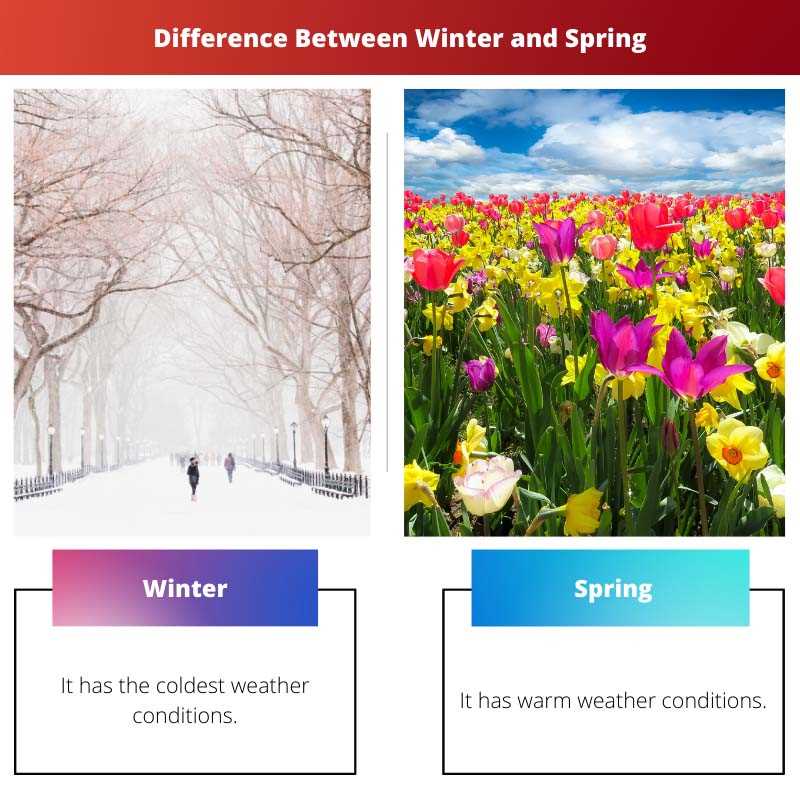
Winter is a great season for outdoor sports and recreation. The cold weather and snow create the perfect conditions for various winter sports.
- Skiing and Snowboarding: Skiing and snowboarding are popular winter activities that involve gliding down slopes covered in snow. There are different levels of difficulty, from beginner to advanced, making it suitable for everyone.
- Snowshoeing: Snowshoeing is a great way to explore snowy landscapes. It involves walking or hiking with special shoes that distribute body weight and prevent you from sinking in the snow.
- Ice Skating: Ice skating is a classic winter sport that can be enjoyed on frozen lakes or indoor ice rinks. It requires balance and coordination, and it’s a fun activity for all ages.
- Sledding and Tubing: Sledding and tubing are thrilling activities that involve sliding down snowy slopes on sleds or inner tubes. It’s a fun way to enjoy the winter scenery and experience a bit of excitement.
2. Spring Sports
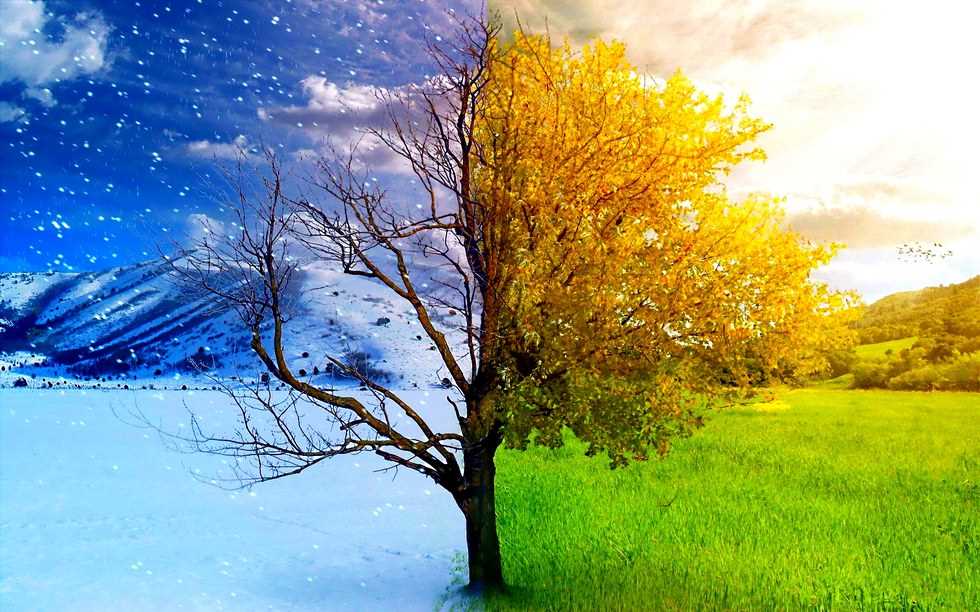
As winter transitions into spring, outdoor sports and recreation activities change due to the milder weather and the melting of snow.
- Hiking: Spring is a great time for hiking as nature starts to come alive with blooming flowers and green landscapes. It’s a peaceful way to explore trails and enjoy the fresh air.
- Cycling: Cycling is a popular activity in spring when the weather becomes warmer. Whether it’s mountain biking or road cycling, there are plenty of opportunities to enjoy the outdoors and get some exercise.
- Running: Spring is an ideal season for running as the temperatures are mild, and the scenery is beautiful. Many people participate in marathons or shorter races during this time of year.
- Kayaking and Canoeing: With the arrival of spring, the rivers and lakes start to thaw, making it perfect for kayaking and canoeing. It’s a great way to explore waterways and enjoy the tranquility of nature.
Conclusion
Both winter and spring offer a wide range of outdoor sports and recreation activities to enjoy. Whether you prefer the adrenaline rush of winter sports or the beauty of spring activities, there is something for everyone in these seasons.
Clothing and Accessories
- Spring: In spring, people typically wear light and comfortable clothing to deal with the increasing temperatures. Some common clothing items for spring include t-shirts, shorts, dresses, and light jackets. It is also common to see people wearing sandals or sneakers during this season. Accessories such as sunglasses and hats are also popular to protect against the sun.
- Winter: Winter requires heavier clothing to keep warm in the cold temperatures. People usually wear sweaters, coats, scarves, and gloves to protect themselves from the cold. Hats and earmuffs are also popular to keep the head warm. For footwear, boots are commonly worn to provide insulation and protection against snow and ice.
Overall, the clothing and accessories for spring and winter vary significantly due to the distinct weather conditions each season brings. While spring calls for light and breathable attire, winter demands warm and insulating clothing to combat the cold.
Holidays and Traditions
Spring Holidays
Spring is a season of new beginnings, and it is often celebrated with various holidays and traditions around the world. Here are some of the notable spring holidays:
- Easter: Easter is one of the most important Christian holidays, celebrating the resurrection of Jesus Christ. It is often marked with church services and the exchange of Easter eggs.
- Nowruz: Nowruz, meaning “new day,” is the Persian New Year celebrated by people of Persian descent. It is a time for family gatherings, feasting, and the spring cleaning of homes.
- Holi: Holi is a Hindu festival of colors that celebrates the arrival of spring. People celebrate by throwing colored powders and water at each other, dancing, and enjoying festive foods.
Winter Holidays
Winter is a season of cold weather and festivities. Different cultures and countries have unique holidays and traditions during the winter months. Below are some examples:
- Christmas: Christmas is a Christian holiday that celebrates the birth of Jesus Christ. It is typically celebrated on December 25th with church services, gift-giving, and festive decorations like Christmas trees and lights.
- Hanukkah: Hanukkah is a Jewish holiday that commemorates the miracle of the oil in the temple. It is celebrated over eight nights by lighting the menorah, playing dreidel games, and eating traditional foods like latkes and sufganiyot.
- Chinese New Year: Chinese New Year, also known as Spring Festival, is a major traditional Chinese holiday. It is celebrated with dragon and lion dances, fireworks, family gatherings, and the exchange of red envelopes containing money.
| Aspect | Spring Holidays | Winter Holidays |
|---|---|---|
| Season | Spring | Winter |
| Main Celebrations | Easter, Nowruz, Holi | Christmas, Hanukkah, Chinese New Year |
| Religious Significance | Christian, Persian, Hindu | Christian, Jewish, Chinese |
| Traditions | Resurrection, spring cleaning, color throwing | Gift-giving, lighting menorah, lion dances |
“Question-Answer”
What are some differences between spring and winter?
Some differences between spring and winter are the temperature, weather conditions, and the types of plants and flowers that bloom. In spring, the temperature starts to warm up, the weather becomes more mild, and flowers begin to bloom. In winter, the temperature is colder, the weather is often harsh and snowy, and many plants go dormant for the season.
How does the temperature differ between spring and winter?
The temperature differs greatly between spring and winter. In spring, the temperature starts to rise and become milder. It is a transition from the cold winter to warmer weather. In winter, the temperature is usually much colder, with freezing temperatures being common. The temperature difference between the two seasons can be quite significant.
What are some common weather conditions in spring?
Some common weather conditions in spring include mild temperatures, rain showers, and occasional thunderstorms. Spring is known for its unpredictable weather, where it can be sunny and warm one day and rainy and cool the next. This is often due to the changing atmospheric conditions as winter transitions to spring.
How do the plants and flowers differ between spring and winter?
The plants and flowers in spring are vastly different from those in winter. In spring, many plants start to come out of their dormant state and start to bloom. Trees begin to grow new leaves, and flowers start to blossom with vibrant colors. In winter, however, most plants and flowers go dormant, and there is little to no growth or blooming.
What activities can be enjoyed in spring?
There are many activities that can be enjoyed in spring. Some popular activities include gardening, hiking, picnicking, and outdoor sports. With the milder temperatures and blooming nature, spring is a great time to spend time outdoors and enjoy the beauty of the season.
How does the mood differ in spring compared to winter?
The mood in spring is generally more upbeat and cheerful compared to winter. After a long and cold winter, people often feel a sense of renewal and optimism as the weather starts to warm up and nature comes back to life. In winter, the cold and dark days can sometimes lead to feelings of gloominess and lethargy.







